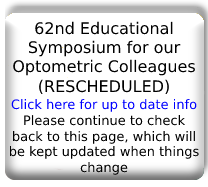Northern New Jersey Eye Institute on ZocDoc
LASIK
The surgeons at Northern New Jersey Eye Institute have extensive experience performing a wide spectrum of LASIK and related refractive eye surgeries. LASIK procedures have proven to be effective at providing patients with a safe and painless option for permanently improving their vision. These procedures are capable of treating nearsightedness and farsightedness, as well as astigmatism, and eliminate the need for glasses and/or contact lenses. With the ability to perform multiple vision correction procedures, our eye surgeons will be able to recommend the procedure that is right for you. Please click here to schedule a LASIK consultation with one of our eye surgeons.
For patients interested in learning a bit more about LASIK please continue reading!
LASIK: Laser-assisted in situ keratomileusis, better known as LASIK, is the most commonly performed laser eye surgery in the United States. When the procedure is performed correctly, it eliminates or greatly reduces the patient’s need to wear glasses or use contact lenses. By reshaping the cornea, LASIK allows light to enter the eye is such a way that focuses on the retina, which allows for clear vision. The procedure is frequently used to treat and/or correct three main eye issues: myopia, hyperopia, and astigmatism. In the case of myopia (nearsightedness) the laser is used to flatten the front surface of the eye. With hyperopia (farsightedness) the laser is used to reshape and steepen the center of the cornea. And when the patient has an astigmatism, the LASIK tool is used to reshape the cornea so it becomes less steep and more spherical.
IntraLase: This procedure makes use of the IntraLase® FS laser, an extraordinarily accurate machine which fires ups to 15,000 pulses per second and assists in corneal flap creation. This allows the eye surgeon the ability to determine the optimum depth and diameter for the flap, on a patient-by-patient basis. Because this procedure is so exact, patients who undergo this procedure are less likely to require an enhancement (a follow-up procedure) than if they opt for some other laser vision correction surgeries.
LASEK: Laser epithelial keratomileusis (a.k.a. LASEK) is a vision correction procedure where the laser is directly applied to the outer surface of the eye to improve vision. During the surgical procedure the epithelial layer is cut and lifted prior to reshaping, and then it is folded back on to the eye at the conclusion of the process. Some other procedures remove the epithelial layer completely, which will regenerate over time. LASEK procedures use a tool called the trephine, which is capable of cutting a very thin flap – this is attractive to patients who have thin corneas or “steep” corneas, which cannot handle the tools used in a LASIK procedure. One potential downside of LASEK, when compared to LASIK, is that recovery time is usually longer.
PRK: Photorefractive keratectomy (PRK) is a laser vision correction surgery that is often used to deal with “low refractive” eyesight problems, and like LASEK, may be advantageous for people with thin corneas. While PRK does reshape the cornea, like other laser eye surgeries, the process involves the complete removal of the epithelial. Because of this, patients should expect to have a bandage contact lens placed over the eye(s) post-surgery to protect the eye while the epithelial regenerates.
Wavefront: This laser vision correction procedure is occasionally referred to as “custom” LASIK surgery because of the added precision that is built-in to the process. While the procedure makes use of a laser, like other procedures, the surgeon is also able to make use of a 3D map of how the light enters that particular patient’s eyes. When used in tandem, the surgeon is able to achieve a more significant degree of visual improvement than what someone would expect with more traditional vision correction procedures. Because the eye surgeon is able to create this “custom” vision correction road map, Wavefront is able to not only improve your eyesight score, but the way you see as well. That could mean an enhanced ability to see fine detail or a greater awareness of contrast, but a patient should speak with their eye surgeon to understand the exact benefits they might be able to experience, should they undertake this procedure.

"Dr. Crane is one of less than 100 doctors in the United States to be able to bring this new technology to his patients."
"Dr. Crane is one of less than 100 doctors in the world who have been approved to participate in the iDose FDA trial"
iDose exchange
"Dr. Crane is one of less than 15 doctors in the United States to perform this procedure for his patients."
"Dr. Crane is one of less than 15 doctors in the world who were approved to participate in the iDose exchange FDA trial"
Infinite
"Dr. Crane is one of less than 15 doctors in the United States who were able to bring this new technology to his patients."
"Dr. Crane is one of less than 15 doctors who were approved to participate in the iStent Infinite FDA trial"
General
Eye Injuries From Paintball Guns, Air Guns and Other Projectile Toys
FDA issues warning for contaminated eye drops that can cause infection.
"Dr. Crane and Glaukos have a long history of working together on several medical device and pharmaceutical studies. He has been able to offer these technologies to his patients and the products from these studies have progressed to help treat hundreds of thousands of patients in need."
Employment Opportunity: Optometrist in Essex, Morris, and Union Counties
Dr. Crane Top Doctor 2019
Congratulations to Dr. Crane for being the 2nd surgeon in the United States to perform a new treatment for Glaucoma. We hope this treatment will bring further advances in the care of our glaucoma.
ASCRS Thanks Dr. Crane for Volunteer Work
Dr. Spier Named to OSN's Premier Surgeon 300
Dr. Spier: Weekend Comedian
Dionne Warwick on Dropless Surgery [VIDEO] (Surgery Performed by Dr. Spier)
Dr. Crane and Staff congratulate their patient Dr. William Scaife
Dr. Crane named to the ASCRS Council of 100
 Dr Crane meets one of his favorite Sharks, Daymond John, at a book signing!
Dr Crane meets one of his favorite Sharks, Daymond John, at a book signing!














